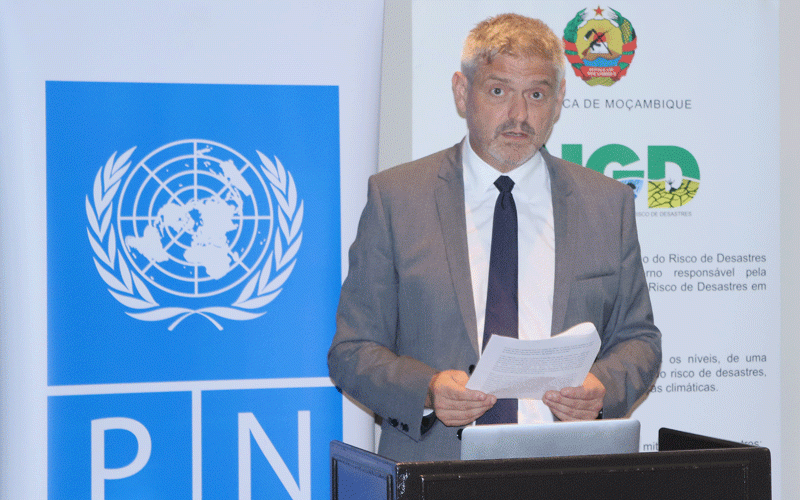
THE World Bank is reviewing its initial projections that showed that Zimbabwe’s economy will growth by 6% this year at a time companies are closing down due to currency volatility and other pressures.
Formal businesses are struggling to survive in an environment where they are only allowed to trade using the volatile Zimbabwe Gold (ZiG) currency.
On the other hand, the informal market is a foreign currency-only market that is attracting suppliers, leaving some shortages in the formal sector.
In the January inflation statistics for last month, the Zimbabwe National Statistics Agency indicated that the United States dollar month-on-month inflation rate rose by a whopping 10,9 percentage points to 11,5%.
At the same time the ZiG month-on-month inflation rate rose by 6,8% percentage points to 10,5%.
World Bank Country chief economist Victor Steenbergen said they were optimistic that Zimbabwe’s economy would recover due to strong perfomances from the agriculture and mining sectors, but there were a lot areas that needed attention.
“On inflation, our current estimates put it at around 10% for the year 2025. In terms of the impact that the recent closure of shops are providing for our growth, we are still reviewing this. We do not know at this point,” Steenbergen told Standard business.
“However, we see that most of the increase in growth come from both agriculture and industry and mining.
- Zim has 2nd highest rising food prices: WB
- 'Market discipline difficult to maintain'
- Govt policy unpredictability destroying formal economy
- UZ fiasco shows govt is aloof
Keep Reading
“Wholesale and retail closures of the formal sector, we think that it could be robust, but it is too early to tell.”
Economists are sceptical about the 6% growth rate as there is a 233,03% increase in the vote appropriations for the current fiscal year to ZiG322,63 billion, from 2024.
“Now moving to the medium term, our outlook for 2025 is that growth is anticipated to increase to 6% due to a recovery in agriculture, especially in maize and tobacco, but also as we see investments paying off in the production of gold and lithium, as well as iron and steel, and therefore leading to robust growth rates in mining as well as in industry,” Steenbergen said.
“The assumption here is also that the (Reserve Bank of Zimbabwe) adheres to tight monetary supply, moderating inflation. There are significant risks to this outlook.
“There is obviously the possibility of continued climate shocks. We are still monitoring how the rains are going to affect the agricultural recovery.”
He said there were still risks of excess money supply.
“There are the potentials of fiscal risks, particularly related to a rising wage bill, expenditures, and (state-owned enterprises). Thirdly, as in previous years, there is a risk of excess money supply growth, inflation and exchange rate depreciation,” Steenbergen said.
“Finally, we also see that global demand may be declining because of trade shocks, and that could affect Zimbabwe, particularly through lower mining commodity prices and rising geopolitical tensions.”
Economist Nigel Chanakira said it was unlikely for Zimbabwe to achieve the 6% gross domestic product (GDP) growth due to internal and external shocks.
“For me, it is very unlikely for Zimbabwe to achieve the 6% GDP growth. I would say we will fall in a number below six,” Chanakira said.
“The retail sector is already feeling the heat hence the closures. There is the debt that we are dealing with,” he said.
“Moreover, this USA withdrawal of the aid we used to get, the U.S. President’s Emergency Plan for Aids Relief (PEPFAR) aid, it’s another shock that we were not prepared for. It means we have to fund ourselves. So, I would say we might not achieve it.”
Local financial services firm, FBC Securities Private Limited (FBC), noted that the American government cutting foreign aid will result in increased fiscal pressures, as the government may be forced to divert already scarce resources to fund these essential services.
Job losses in donor-funded sectors, such as non-governmental organisations and humanitarian projects, will negatively affect household incomes, lowering aggregate demand and consumption as well as reducing foreign currency deposits.
“Other Western financial institutions, which are already cautious about Zimbabwe’s arrears burden, may become even more hesitant to engage in debt restructuring or new funding programs,” FBC said.
“This could reduce infrastructure and private sector financing, limiting Zimbabwe’s ability to develop key industries such as mining, agriculture, and manufacturing, making the 2025 GDP growth forecast of 6% difficult to achieve.”










